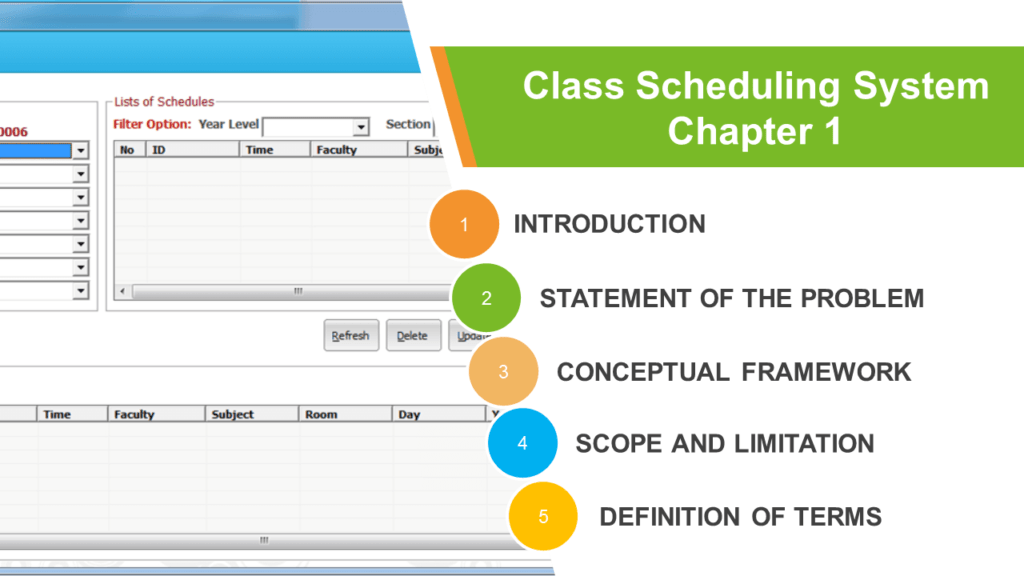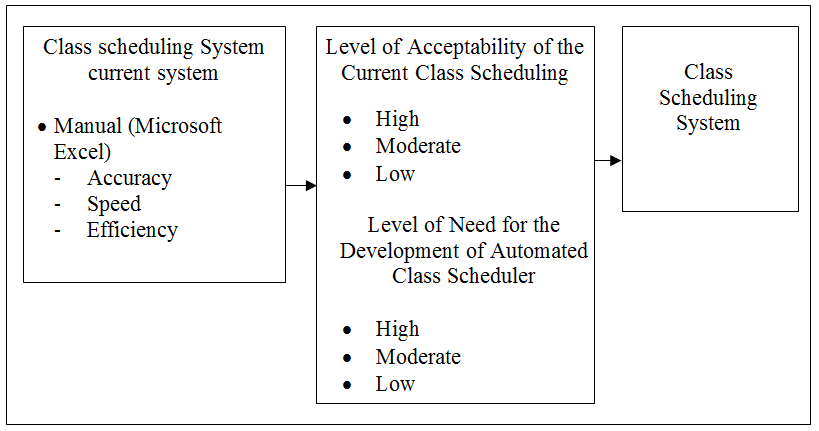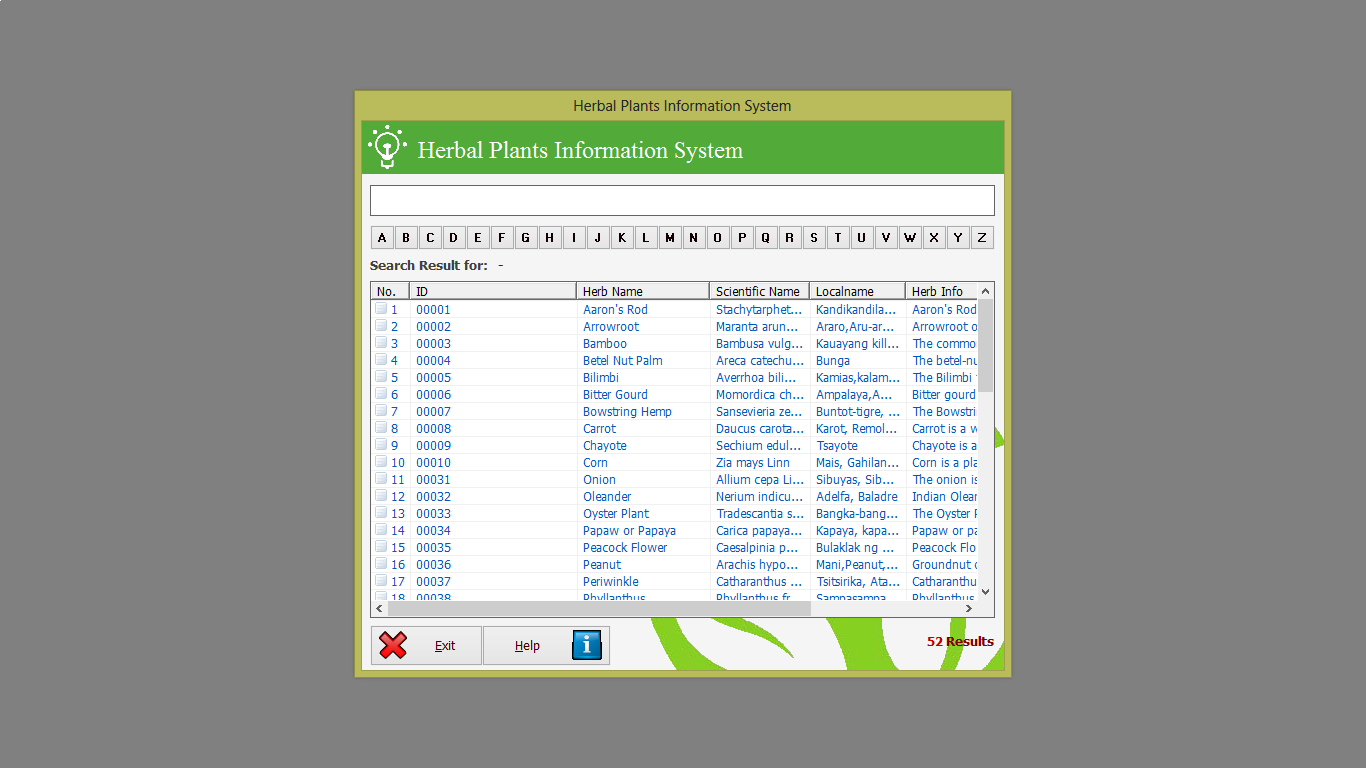Class Scheduling System Chapter 1
The project entitled class scheduling system is a solution that will replace the manual method of preparing a schedule of classes. This article is an example of chapter 1 documentation of the said project; this is based on a thesis format provided by a certain school/college. Our team can provide you with the revised format based on your requirements/outline.

CHAPTER I
This chapter discusses the statement of the problem, hypothesis, theoretical/conceptual framework, significance of the study, scope and limitation of the study and definition of terms.
INTRODUCTION
One of the many things schools and universities have in common is the need for scheduling. People scheduling, class scheduling, events scheduling, etc. However, inefficient scheduling can lead to conflicts or double bookings, inefficient use of rooms and resources, and more (http://www.peoplecube.com).
Class schedules are planned for smooth operation purposes and are subject to change in case to case basis. Although we make every reasonable effort to avoid making changes on posted schedules, it is sometimes necessary to add or delete courses, change times, days, or locations of courses, change academic calendar dates or cancel courses for insufficient registration and/or academic/administrative decision (http://www.law.seattleu.edu).
Class scheduling refers to the process of preparing a class schedule. Class schedule shows subject, time allotment, days, room utilization, instructor, and class adviser. Both instructor and student use it for reference as classes begin. The [name of the school] uses this for classroom monitoring and classroom observation.
The class scheduling of [name of the school] is designed while considering the instructors’ and students’ availability. Since most instructors are part-time employees, class schedule system permits employees to work according to their available time.
Students’ safety and concerns are also considered in preparing the class schedule. The department chairman is using Microsoft Excel or manual procedures in preparing schedule of classes.
It was found out that the start of classes every semester is delayed due to late posting of class schedule because of conflicts in time, subjects and room assignment. This problem is always encountered by the department chairman, students and instructors.
This study is conducted in order to identify possible solutions to the problems met by the instructors, class advisers, students, department chair, and of the school as a whole.
STATEMENT OF THE PROBLEM
This study aims to assess the class scheduling system of [name of the school].
Specifically, the study sought to answer the following questions:
- What are the procedures employed by the [name of the school] in class scheduling?
- What are the problems encountered by the students and instructors with regards to class schedule as to:
- speed
- accuracy
- efficiency
- What is the level of acceptability of the current scheduling system to the students, faculty and department chairman?
- What is the level of need for developing Automated Class Scheduler as perceived by the students, faculty and department chairman?
ASSUMPTIONS OF THE STUDY
The following were the assumptions formulated by the researchers based on the problems stated:
- The level of acceptability of the present scheduling system among students, faculty and department chairman is low.
- The level of need for developing the Automated Class Scheduler as perceived by students, faculty and the department chairperson is high.
THEORETICAL FRAMEWORK OF THE STUDY
Class Scheduling System will be created specifically for the [name of the school] to provide accuracy, speed and effective class schedule.
Class Scheduler is easy to use whether in single or multi-user application that helps students and school administrators quickly schedule students’ classes. The software is ideal both for high school and college. The idea behind Class Scheduler is to increase the productivity of classroom administrators by automating the class scheduling process. Class Scheduler also has visual scheduling features. Classes can be deleted, added and assigned to different rooms by the instructor right from the schedule view. Class times can even be moved around using drag and drop, adjusting or by resizing individual classes (http://www.CyberMatrix.com).
CONCEPTUAL FRAMEWORK OF THE STUDY
This study aims to assess the class scheduling system of [name of the school] in terms of speed, accuracy and efficiency. When the performance of the current system is low in terms of speed, accuracy and efficiency, the class scheduler system is highly recommended.

Schematic Diagram Illustrating the Conceptual Framework of the Study
SIGNIFICANCE OF THE STUDY
The persons who will benefit by this study are the following:
Department Chairman. The proposed system will benefit the department chairman in creating a flexible scheduling option that will let her/him build virtually any type of schedule.
Instructors. Instructors can start classes on time without experiencing conflicts as to schedule and room assignments.
Students. The proposed system will help students determine their class schedule before the start of the semester.
Researchers. This study will provide other researchers’ cases to study other variables not
covered in this study.
Future Researchers. The time allotted for the development of the system is limited, that’s why it will be an opportunity for the next batch of researchers to review the project and apply the necessary changes and updates.
SCOPE AND LIMITATION OF THE STUDY
This study was conducted at [name of the school] and focused on the development of Class Scheduling System. This includes subjects, time, day’s allotment, room utilization, instructors and class advisers.
The findings of this study were based on the answers of the respondents in the instrument used. The interpretation of the results is limited only to the statistical tools in the study.
DEFINITION OF TERMS
In order to provide clear interpretation of basic concept used in this study, the following terms are conceptually and operationally defined.
Accuracy – The degree of closeness of a measured and calculated quantity to its actual (true value) (http://en.wikipedia.org). Operationally, this is used to measure the correctness in preparing class schedule.
School – Provides quality general education to enable students to think critically, communicate effectively, complete accurately and adapt to change appropriately (www.umcc/genral_edu.ph). Operationally, in this study, it is the cooperating agency where the study was conducted.
Class Scheduler – known as college style scheduling, is a form of hand scheduling that uses information from the Master Schedule and produces cards or labels with the course information printed on them (http://www.CyberMatrix.com). Operationally, as used in this study, it is the Automated Class scheduler proposed by the researchers.
Department Chairman – acts or presides as chair, as of an academic department in a university (www.answers.com). Operationally, the department chair is a faculty member responsible for the daily operation of the program as well as long-term oversight of planning, scheduling, and curriculum development.
Efficiency – In mechanics, the measure of the effectiveness with which a system performs (www.answers.com). Operationally, it is used to measure the effectiveness of class schedule.
Instructors –The entire teaching staff of a university, college, or school, including any administrators holding academic rank (http://encyclopedia.thefreedictionary.com). Operationally, it refers to the faculty of [name of the school] who were one of the respondents of the study.
Level of Need – needs might include demand for a particular type of business, for a certain government program or entity, or for individuals with particular skills (http://en.wikipedia.org). Operationally, it necessitates the development of an Automated Class Scheduler to improve the academic class schedule.
Level of Acceptability – The quality of being acceptable (http://www.thinkexit.com). Operationally, the assessment used to determine the acceptability level of the class schedule of students and faculty prepared by the [name of the school].
Speed – The rate at which something moves or travels (http://pimsleur.english-test.net). Operationally, it refers to how fast the preparation of the class schedule of the [name of the school] is done.
Credits to the researchers and developers of the project
You may visit our facebook page for more information, inquiries and comments.
Hire our team to do the project.


